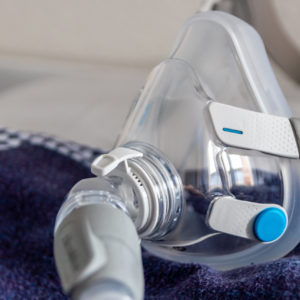SoClean Ozone Exposure Lawsuit Seeks Class Action Status For Consumers Nationwide
The makers of SoClean failed to warn users of the CPAP machine sanitizing device about the potential health risks of ozone exposure, according to the class action lawsuit

Individuals with sleep apnea were unknowingly exposed to dangerous levels of ozone from SoClean CPAP cleaning devices, according to a class action lawsuit that alleges the manufacturer lied about how the machines worked.
The complaint (PDF) was filed by James Cason in the U.S. District Court for the District of Arizona on April 13, seeking class action status to pursue damages over the SoClean ozone exposure risks.
SoClean has been marketed as a device that will sterilize and deodorize CPAP machines, which are used by individuals with sleep apnea. However, to be effective at sanitizing the CPAP machines, SoClean uses high levels of ozone gas, which may pose serious health risks for consumers.
Cason indicates that he used a SoClean device for years, and accuses the manufacturer of failing to disclose that the devices emit high levels of ozone, which can cause serious health problems for users.
“SoClean’s representations are designed to mislead consumers into believing that the machine uses a benign form of oxygen to clean CPAP machines rather than a harsh gas that is generally only suitable for commercial sanitization under highly controlled conditions,” Cason’s lawsuit states. “These misrepresentations are made more egregious because the SoClean devices are designed and marketed for use on the consumer’s bedside table and because CPAP users suffer from many symptoms that ozone exposure exacerbates – making the falsehoods especially reprehensible and dangerous.”
The case is one of a growing number of SoClean lawsuits seeking class action status in the wake of massive Philips CPAP machine recalls issued last year, which impacted millions of sleep apnea machines with a polyester-based polyethylene sound abatement foam that has been found to degrade and breakdown, releasing toxic particles directly in the users air pathways.

Philips CPAP Recall Lawsuit
Millions of recalled Philips DreamStation, CPAP, BiPAP and ventilator machines may release toxic foam particles and chemicals into the air pathway.
Learn More About this Lawsuit See If You Qualify For CompensationAt the time of the recall, Philips made several statements suggesting that ozone CPAP cleaners like SoClean may cause the sound abatement foam to break down. While SoClean has maintained that the foam problems were the result of poor design choices by Philips, and not their sanitizing machine, many lawsuits allege that SoClean withheld information about the side effects that result high levels of ozone gas necessary to clean a CPAP.
In January, the U.S. Judicial Panel on Multidistrict Litigation centralized all SoClean CPAP Sanitizing Machine lawsuits in the Western District of Pennsylvania for pretrial proceedings as part of a MDL, or multidistrict litigation. The cases are centralized before U.S. District Judge Joy Flowers Conti, who is also overseeing a MDL established for the growing number of Philips CPAP lawsuits filed over injuries and exposure to the toxic sound abatement foam.
Get more articles like this sent directly to your inbox.
"*" indicates required fields






0 Comments